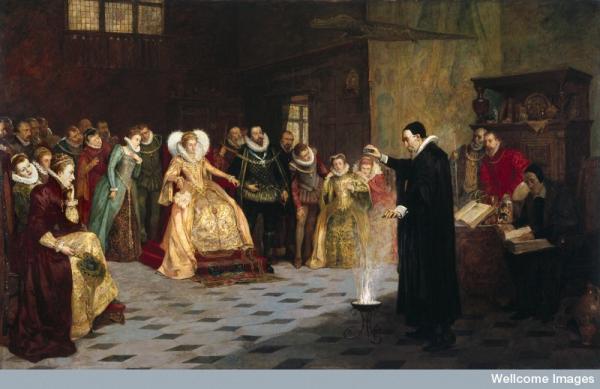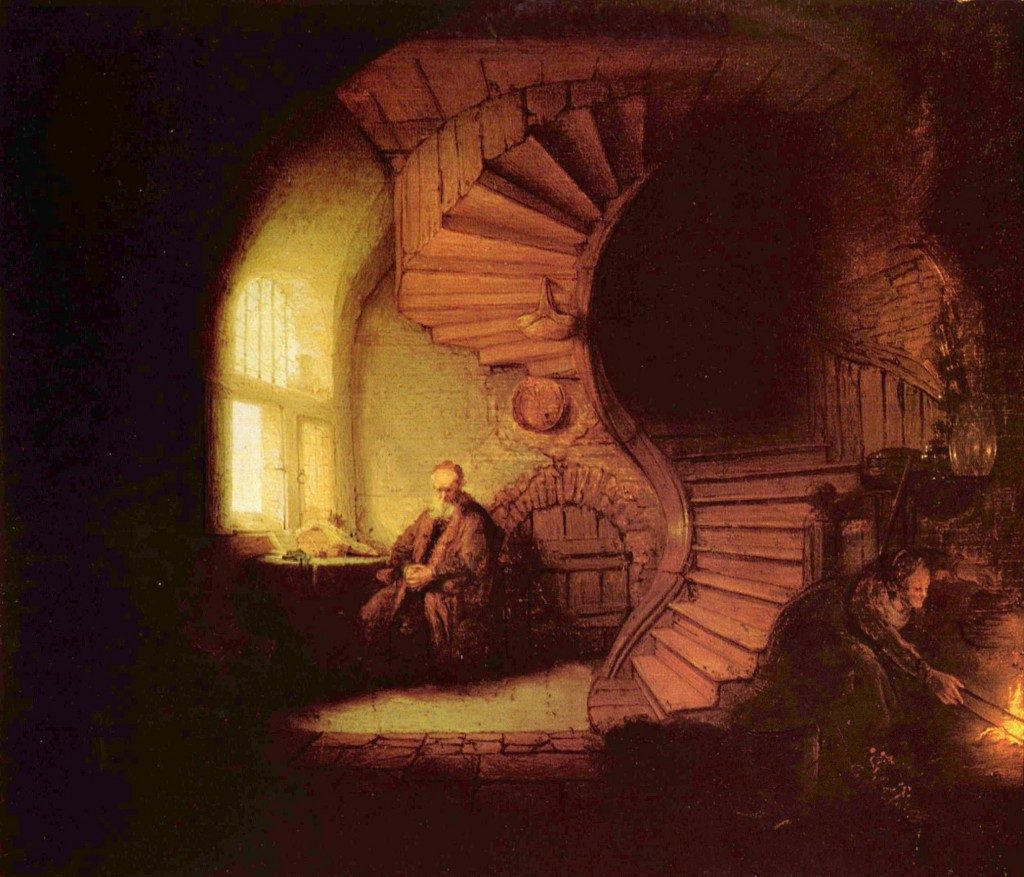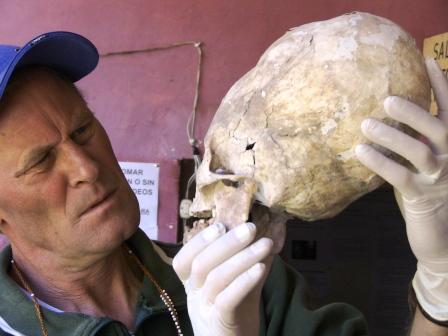Enigmatic Tudor polymath known in his day as ‘the Queen’s conjuror’ is subject of exhibition at Royal College of Physicians
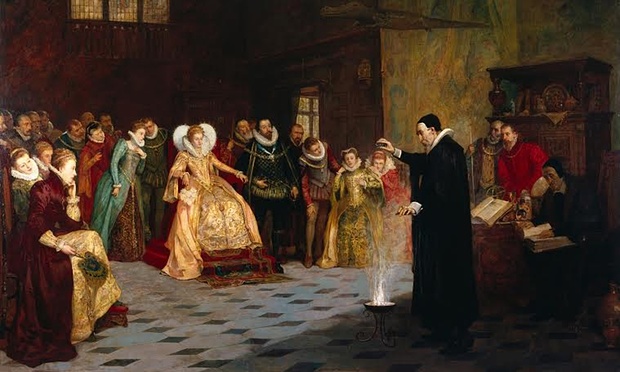
John Dee performing an experiment before Elizabeth I, by Henry Gillard Glindoni. Photograph: Wellcome Library
(Source: The Guardian) – Hidden beneath a painting of the enigmatic Tudor polymath John Dee performing an experiment for Elizabeth I is a dark and slightly terrifying secret, research has discovered.
X-ray imaging of the stately Victorian artwork has revealed that Dee was originally surrounded by human skulls before the ghoulish image was painted over, probably because it was too odd for the buyer. But curators of an exhibition opening on Monday believe it sums up the conundrum of Dee: should we remember him as brilliant pioneering scientist, or as an occultist who thought he could talk to angels?
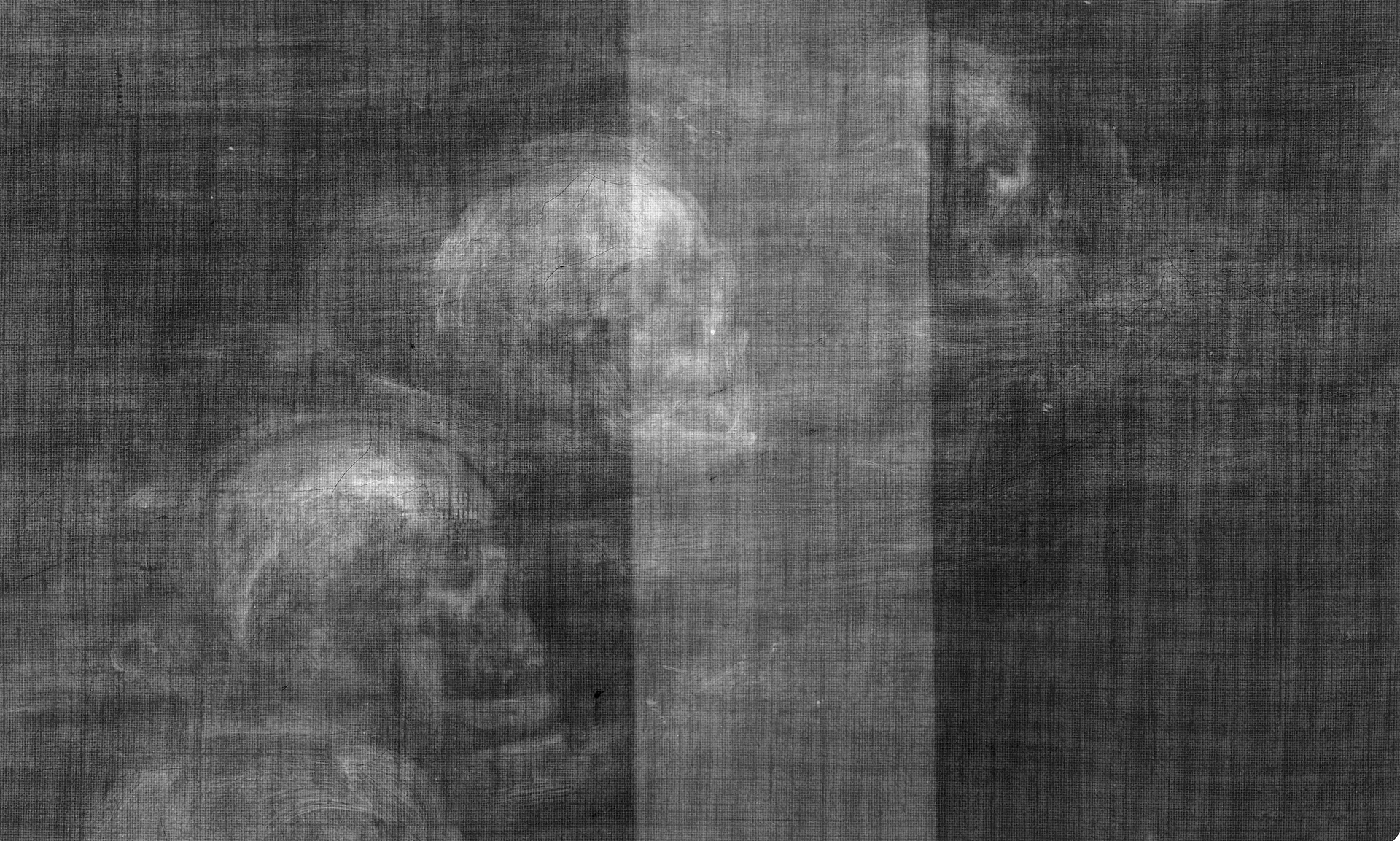
The question arises at the Royal College of Physicians (RCP) headquarters in London, where remarkable books from Dee’s personal collection go on public display for the first time.
Dee, known in his day as “the Queen’s conjuror”, was one of the most extraordinary Elizabethans, a Renaissance polymath who has fascinated people for centuries. He may have been the inspiration for Shakespeare’s Prospero in The Tempest, and more recently he has intrigued artists such as Derek Jarman, who had him as a central character in his 1978 film Jubilee, and Damon Albarn, who wrote the 2011 opera Dr Dee.
The exhibition’s curator Katie Birkwood said: “He is one of Tudor England’s most interesting and enigmatic figures and we are exploring that without coming down with a view on whether he is a scholar, courtier or magician. He is all of those and more.”
The discoveries in the painting by Henry Gillard Glindonicould be a metaphor for the whole show, said Birkwood. It imagines a scene with Elizabeth visiting Dee’s house in Mortlake. To her left are her chief adviser William Cecil and her favoured courtier Sir Walter Raleigh. Seated behind Dee is his medium, or scryer, Edward Kelley, who is wearing a long skullcap to conceal the fact that his ears had been cut off, probably a punishment for a youthful crime.
Dee is performing some sort of experiment. “It looks like the sort of dramatic thing chemistry teachers do at the end of term,” said Birkwood.
The x-ray imaging commissioned for the exhibition reveals that Dee was originally standing in a circle of human skulls. Why Glindoni painted them out is unknown, but Birkwood said it was easy to imagine it was on the instructions of the probably unnerved person who commissioned it.

Moe is the founder of GnosticWarrior.com. He is a father, husband, author, martial arts black belt, and an expert in Gnosticism, the occult, and esotericism.

